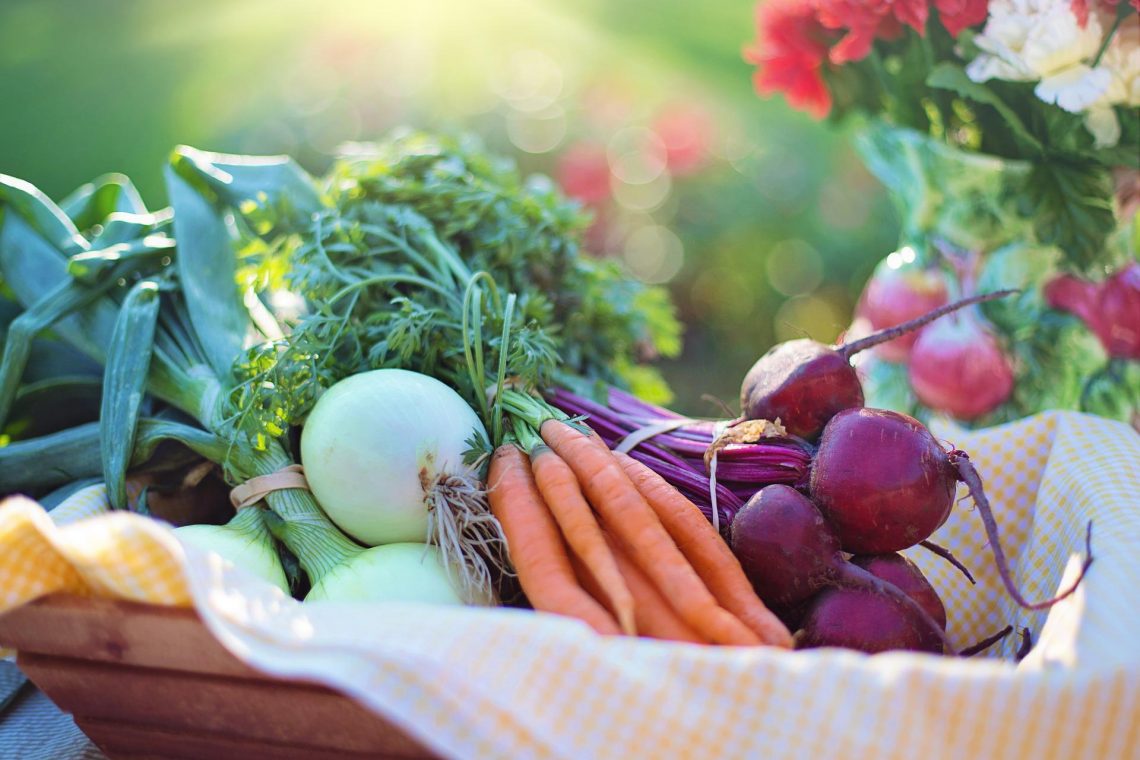Finding Sources of Fresh Food
After publishing Corey’s Digs report on NEW Controlled Food System is Already in Place and They Will Stop at Nothing to Accelerate Their Control, Pete Kennedy’s article on Finding Sources of Fresh Food over at The Solari Report, seems only fitting. There are some terrific resources in here that can be very helpful and beneficial to many.
By Pete Kennedy, The Solari Report
With the accelerating deterioration in quality and reliability of the conventional food supply, one of the best steps anyone can take for health and preparedness is to increase purchases of food produced by regenerative farmers and small-scale artisans. What follows is a summary of resources to help you find fresh food.
Any search should start with the Weston A. Price Foundation (WAPF, www.westonaprice.org). WAPF is an international membership 501(c)(3) nonprofit dedicated to restoring nutrient-dense foods to the American diet through education, research, and activism. The foundation operates on a system of local chapters; there are around 320 chapters in the U.S. and close to another 75 internationally. It is the primary responsibility of each chapter leader to locate sources of real food for both WAPF members and non-members who ask. To find a WAPF chapter near you, go here.
Every December, WAPF also publishes its Shopping Guide, a comprehensive listing of sources for 30 food categories, including meat, dairy, poultry, ferments, and other nutritious foods. (Members receive the guide for free; non-members can purchase the guide for $3.) With “Best,” “Good,” and “Avoid” rankings, the guide strives to identify the healthiest foods consumers can purchase in health food stores, supermarkets, and farms, including foods that can be ordered by phone or online.
I. Websites to Locate Regenerative Farms
For those who don’t live near a WAPF chapter or who live in a food desert with few (if any) local sources of nutrient-dense foods, here are websites listing regenerative farmers that include those who ship their products:
1. EatWild.com – Founded in 2001 to promote the benefits of eating meat, eggs, and dairy products from “100% grass-fed animals or other non-ruminant animals being fed their natural diets,” EatWild features a state-by-state-plus-Canada directory of local farmers who sell pasture-raised products direct to consumers. The website’s directory currently lists more than 1,400 pasture-based farms.
2. LocalHarvest.org – Local Harvest’s website has a directory listing “over 40,000 family farms and farmers markets along with restaurants and grocery stores that feature local food.” Local Harvest has listings for local farms, community-supported agriculture (CSA) programs, farmers markets, restaurants, groceries, pick-your-own produce and farm stands.
3. FarmMatch.com – The FarmMatch site connects consumers looking for nutrient-dense food with local farmers and buyers clubs selling food from local farms. Many of the producers on FarmMatch will also ship their products.
4. RealMilk.com – This is the website for A Campaign for Real Milk, a project of the Weston A. Price Foundation to establish universal access to raw milk. All farmers and food buyers clubs listed on the site provide raw dairy products; many also sell meat, poultry, eggs, produce, and other foods. WAPF has both a national and international directory of producers. For an interactive map, go here.
5. AzureStandard.com – Azure Standard markets the products of thousands of farmers and local businesses by providing a one-stop shop for people who have trouble finding organic, naturally produced foods locally. Azure delivers to drop points around most of the country and ships everywhere in the U.S. Go to azurestandard.com for more information.
6. PolyfaceFarms.com – One farm that needs no help to successfully market its products is the world-famous Salatin family farm, Polyface Farm, located in southwest Virginia; the farm ships beef, pork, poultry, and other nutrient-dense foods across the country to customers ordering through polyfaceyum.com.
II. Listings by Certification Organizations
For those interested in getting verification of standards that farmers adopt in raising livestock or growing produce, there are a number of certification organizations providing those services.
Consumers looking for grass-fed meat and dairy from grass-fed animals can go to AmericanGrassfed.org, the website of the American Grassfed Association (AGA). For a list of AGA-certified farms, go here. AGA certifies farms as “grassfed” if the animals on the farm are:
1. only fed grass and forage from weaning until harvest;
2. never treated with antibiotics or added growth hormones;
3. raised on pasture without confinement; and
4. born and raised on American family farms.
The influence of industrial agriculture has diluted the United States Department of Agriculture’s (USDA’s) organic standards, especially for foods like dairy where giant confined animal feeding operations (CAFOs)—whose cows rarely or ever are out on pasture—nevertheless obtain USDA organic certification. The RealOrganicProject.org(ROP) formed to add on requirements to the current USDA standards to restore the term “organic” to its original intent. ROP has certified 850 “real organic” farmers; to view the list, go here.
Other certification organizations with listings for sources of wholesome foods include:
AGreenerWorld.org, which has listings for a variety of certifications with a directory page by “types of outlets” and product categories;
CertifiedHumane.org, which has a listing of retailers and producers of specific foods produced through humane farming practices; and
Certified.NaturallyGrown.org (cngfarming.org), which has a listing by state of producers that avoid GMO feeds and “any synthetic fertilizers, herbicides, and pesticides” as inputs for their operations. Types of operations include produce, livestock, harvesting mushrooms, aquaponics, and honey beekeeping. CNG also publishes the Guide to Exceptional Markets to promote “food co-ops, grocers, and farmers markets” featuring CNG producers.
III. More Local Connections
A. Edible Communities
Another network identifying sources of fresh food in over 90 cities via “independently owned, locally focused publications” is EdibleCommunities.com, which features stories on local farmers and food artisans. Restaurants and farmers markets are among the venues distributing free copies of Edible Communities magazines. Go here to see if a city you live in or near has an Edible.
B. Intentional Communities
An “intentional community” is defined as “a small, localized community of persons or families presuming common interests or values, and usually sharing responsibilities.” The website ic.org lists over 1,100 intentional communities with farms in the U.S. and internationally. Most of these communities allow visitors; a number of them such as Cobb Hill Farm in Hartland, Vermont, have a farm store where consumers can purchase nutritious produce, meat, dairy. and other foods.
C. Community-Supported Agriculture
Consumers can lock in a supply of farm-fresh food by subscribing to CSA programs. CSAs have been defined as a production and marketing model whereby consumers buy shares of a farm’s harvest in advance. The CSA model is mostly used for produce, but some CSAs offer meat, poultry products, eggs, or other foods, or some combination of produce and these other items. Under a produce CSA, subscribers prepay for a growing season to receive weekly distributions of produce; meat CSAs are often for a 6-month period, with winter and summer seasons for distribution to subscribers. There are also multi-farm CSAs. This business model helps farms by improving their cash flow and by having consumers share in the risk of anything going wrong with the harvest. The subscriber isn’t guaranteed a specific amount of food, only that the share will be in proportion to the subscriber’s membership interest in the harvest. You can find a list of CSAs in your area on the Local Harvest website.
D. Farmers Markets and Farm Stores
Aside from going to the farm, there are a number of other local venues where consumers can obtain farm foods as well as foods from local artisans, notably farmers markets. A good farmers market will have a broad array of producers selling quality meat, poultry, dairy, produce, ferments, and baked goods, among other foods. Farmers markets are booming in many areas of the country, and the National Farmers Market Directory (nfmd.org) maintains a U.S. listing online by state. State farmers market associations, state departments of agriculture websites, and your local agricultural extension agents are other sources of information about farmers markets.
For farmers who don’t have the time or inclination to set up at a farmers market, a farm store variation is increasingly taking root. In Ann Arbor, Michigan, for example, local farmers and artisans stock the store shelves at the Argus Farm Stop (argusfarmstop.com) themselves and receive 75% of the sale proceeds. The owners at Argus have trained others around the country in adopting this promising model to increase small-farm revenues and access to quality locally produced food in what amounts to a year-round, all-day farmers market.
E. Food Cooperatives
Another venue where consumers can find farm-fresh products are food cooperatives. “A food co-op is essentially a grocery store that’s owned by the people that shop there. Members get to decide what foods and products are stocked on the shelves, where those items are purchased and what quality standards both products and vendors have to meet” [excerpt from tasteofhome.com/article/food.co-ops]. A national list of food co-ops is maintained by CoopDirectory.org. Before joining a co-op, do your due diligence to find out how much emphasis the co-op places on purchasing food from local farmers and artisans.
F. Buyers Clubs
Food buyers clubs distributing food direct from the farm usually have a less formal operation than food co-ops. Instead of a brick-and-mortar business where members own stock in the co-op, buyers clubs often work out of members’ houses and the members pay an annual fee to belong to the club. If you live near a Weston Price Chapter, ask your chapter leader if there are any food buyers clubs in your area.
G. Food Hubs
A final venue, for the purposes of this story, is the food hub. The USDA defines a “food hub” as “a business or organization that actively manages the aggregation, distribution and marketing of source-identified food products primarily from local and regional food producers to strengthen their ability to satisfy wholesale, retail and institutional demand.” Food hubs increase access and convenience for consumers wanting fresh food. There are currently around 300 food hubs in the U.S. A link to the USDA Food Hub Directory is posted at www.usdalocalfooddirectories.com.
IV. Quality Matters
The healthiest, highest quality food is generally found on the farm. The industrial-food-stocked supermarket, a post-World War II phenomenon, has contributed to the deterioration of the American people‘s health. With industrial food and the pharmaceutical industry increasingly joined at the hip, the decline is only accelerating. Increasing purchases from small farmers and local artisans is the path to better health and stronger communities.
Other Food Related Resources
Shop with Patriots and Ditch Big Box Stores
Homesteading Tips from John Moody, by Corey’s Digs
Seeds for Generations – heirloom seeds and helpful webinars
Food Forest Abundance
Solari Food Risk Tracker
Solari Food Resources


Subscribe to Corey’s Digs so you don’t miss a Dig!











15 Comments
Lisa Hagen
Wowl this is awesome! I’m in Canada and there are places like this starting to occur, but hope to see more. Corey, if you have any leads on Canadian links, much appreciated! You do AWESOME work and so appreciate your efforts!! Much Love!!
Nancy A. Green
I use Farmhouse Delivery here in Austin, Texas. They deliver from local fams and ranchers.
Laura Jackon
Thank you Corey for this very comprehensive collection of information. Since I live in a FDA defined Food Desert, with your information, I was able to find a farm that offers fresh produce and will ship to me. Of course Food Co-ops are another great resource and there is one about an hour away from me.
May everyone find their path to thrive and be healthy during these very trying times.
Marrion Hamm
We are Canadian too. Thankfully, we have a small garden.
RJ Jeffers
I was surprised to see Community Supported Agriculture listed as it seems to be connected to the United Nations and its Agenda 21/30/50 Sustainable Development Goals. This is very easy to disguise, but one has to wonder how this will be used once no one owns anything and most are hungry. I think some of the articles below can clear this up, but I, still, have to wonder why this was included . . . How nice of those who are destroying the planet and the lives of all living on it to plan future communes for those who might survive.
https://base.socioeco.org/docs/guidelines_for_csa_advocates_en.pdf
https://www.fao.org/china/news/detail-events/en/c/1073791/
https://www.euracademy.org/wp-content/uploads/2021/03/Hitchman_How-Community-Supported-Agriculture_En.pdf
https://www.euracademy.org/wp-content/uploads/2021/03/Hitchman_How-Community-Supported-Agriculture_En.pdf
https://www.boell.de/en/2017/10/31/alternatives-agroecology-community-supported-agriculture
https://ufdcimages.uflib.ufl.edu/IR/00/01/09/33/00001/Stapleton_JAFI_SOQ_Urgenci_AcceptedManuscript.pdf
https://orgprints.org/id/eprint/30347/1/Friis%20Susanne%20Community%20supported%20agriculture%20in%20urban%20settings%202016.pdf
https://www.uumfe.org/2013/03/26/sustainable-agriculture-food-systems/
https://www.usda.gov/media/press-releases/2015/10/02/usda-awards-343-million-support-communities-local-foods
https://www.fas.usda.gov/newsroom/fas-2021-highlights-expanding-opportunities-tackling-challenges-us-agriculture-global
https://foodsecurity.org/primercfscuac/
There is another CSA, climate-smart agriculture. It, too, is UN connected.
Pamela
Great site! Let’s do this! With love, Pamela
Cathy jo c
I LOVE her work and the inquisitive mind she has. She’s a ray of light. Great job Corey.
Larry
Just wanted to say thanks, your Awesome, God Bless all your posts are Great…
Prairie Foods @ FarmMatch.com
A number of people have joined our private buying club thanks to you recommending FarmMatch.com. We really appreciate you posting this super helpful blog post!
Corey Lynn
Excellent. That’s great to hear!
Jason Whalen
Hi Everyone,
I just can’t help to think that invoking more concentrated levels of awareness re: the ease of access/benefits to all societies who may get or are currently involved in regenerative farming or local food sourcing is the master key to nullifying big agricultural/gov overreach.
This article should be printed and deposited in every mailbox in any western communities receptive to the wide-range scope of its implications / message!
Thank you for all the work you do, this is a great site!
Sincerely,
Jason
Tiffany
One thing not mentioned here is the value of learning to forage for plants right in our yard or close to home. I never knew many things I thought were weeds are edible, and this takes cost, gas fees, and time to travel out of the equation. Thanks!
Healthy Traditions
Healthy Traditions – https://healthytraditions.com/
Suzy
Not sure if this is the same thing but I have a blueberry farm listed on this website. I find it super helpful all over the US and more.
Pickyourown.org
Corey Lynn
That’s a cool site. Thanks for sharing!